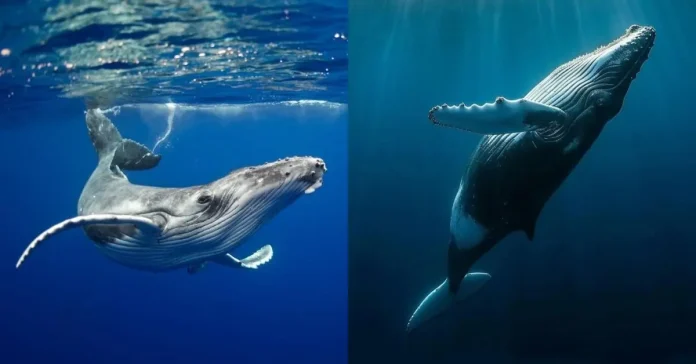The blue whale, the largest creature to ever live on Earth, leads a life of grandeur in the vastness of the ocean. With its towering size and deep, resonant calls, this marine giant moves through the seas with grace and purpose. But, like all living things, even the mighty blue whale has an end. What happens in the final moments before a blue whale dies, and how does this event, a death in the deep sea, give rise to new life?
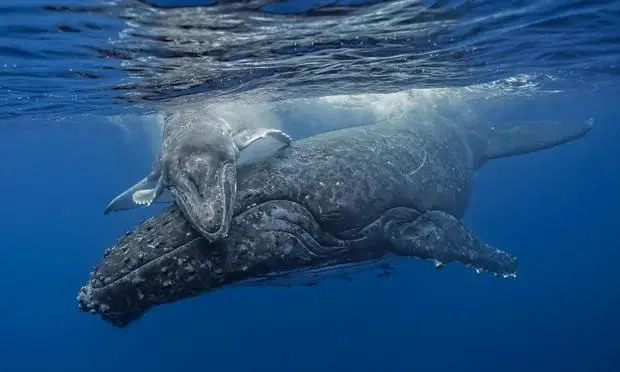
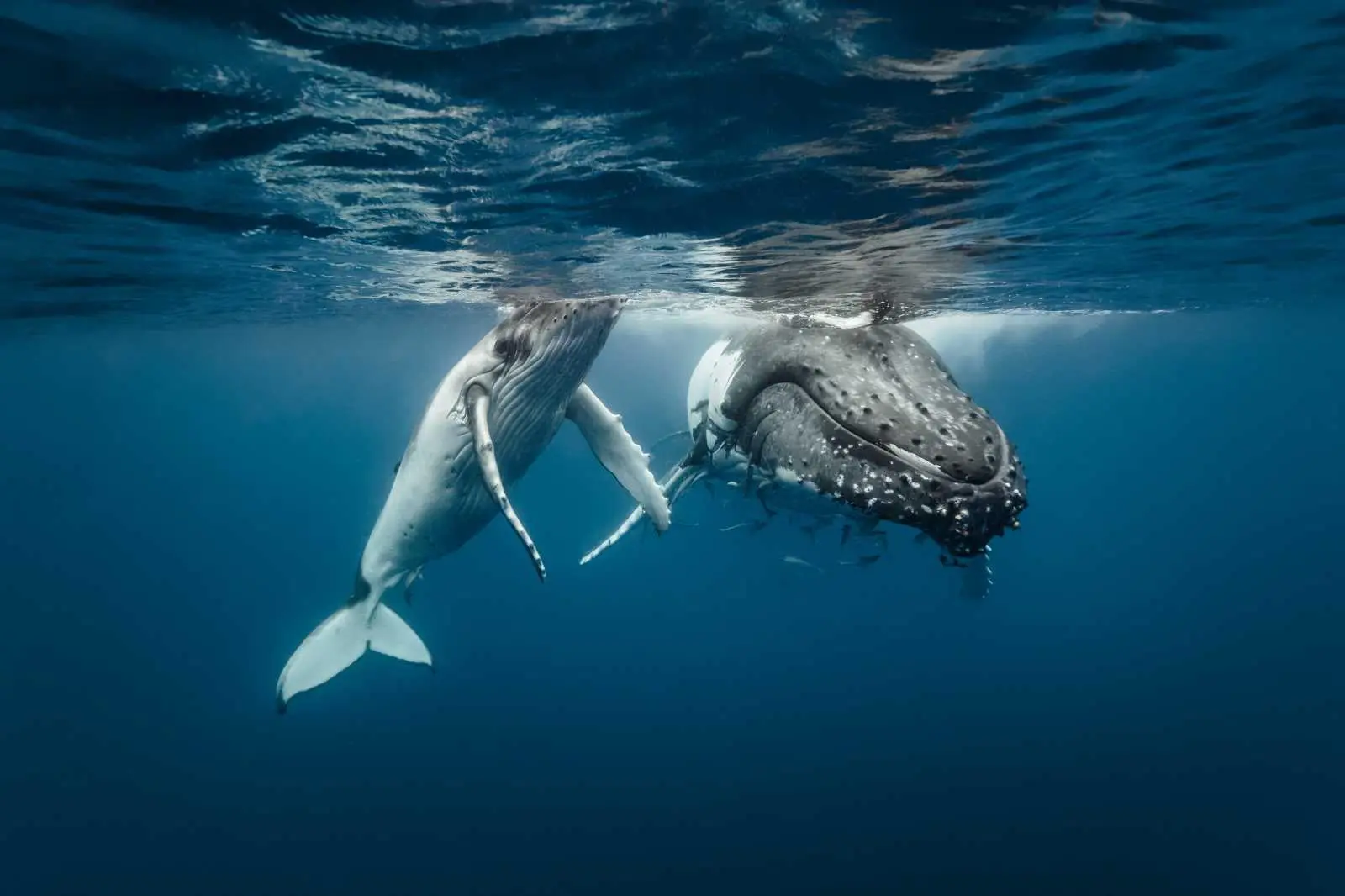
The Final Chapter of a Blue Whale’s Life.
In its later years, as a blue whale reaches the end of its lifespan (typically 70 to 90 years), it may begin to slow down. Aged whales often face various challenges: difficulty in catching prey like krill, weakened bodies from illness or injury, or simply the effects of old age. Gradually, they move less and dive shallower, conserving energy. Some older blue whales may strand themselves in shallow waters or, weakened, succumb to the currents and sink into the deeper ocean.
Unlike many terrestrial animals that might find a quiet, hidden place to pass away, blue whales typically continue moving through the water until their final breath. Their immense size and weight mean that when they die, the whale’s body sinks to the ocean floor, starting one of the most fascinating and life-giving processes in the marine ecosystem.
The final dive. In ahungala Srilanka
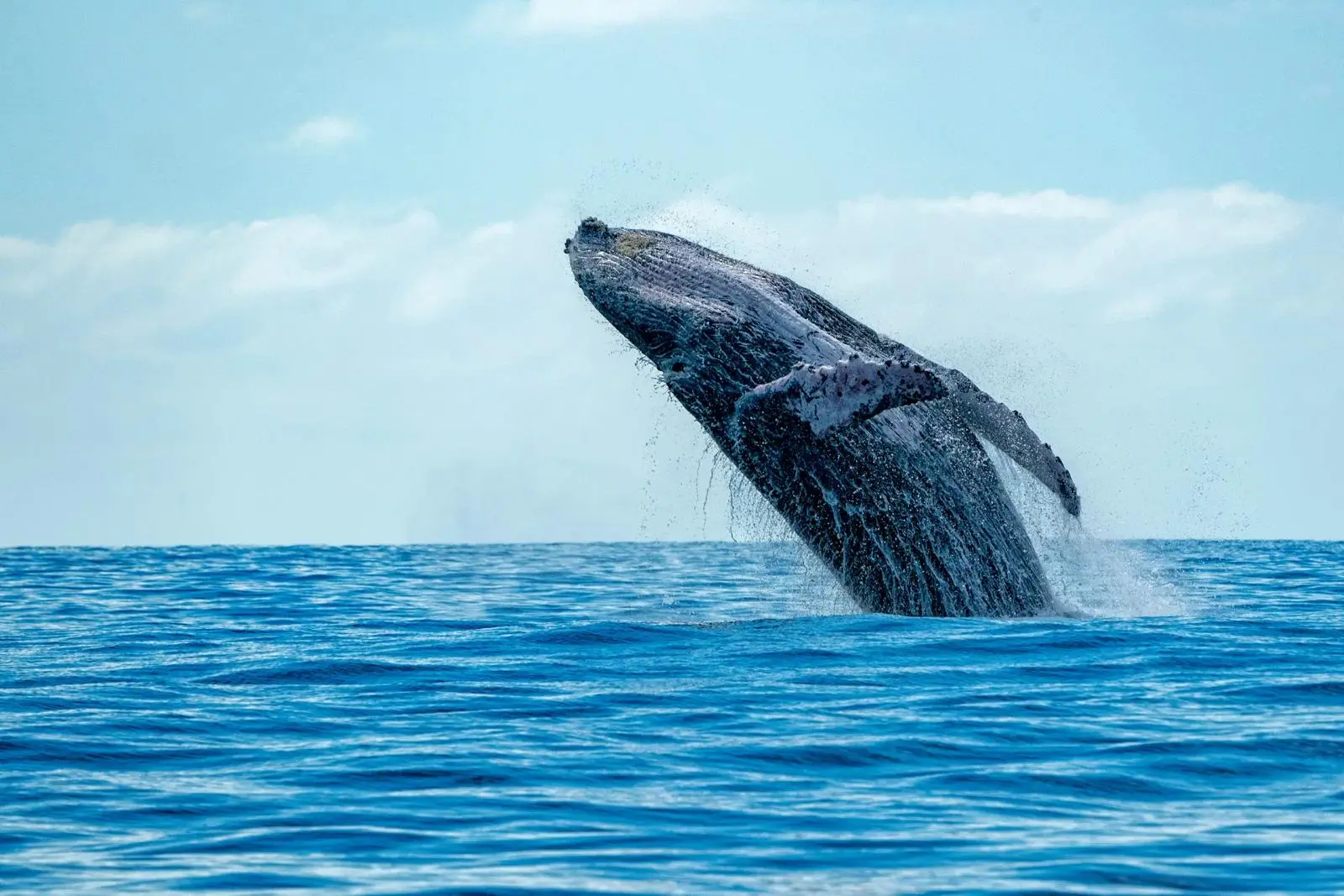
The Whale Fall: A New Ecosystem Is Born.
When a blue whale dies and its body begins to sink into the deep, it creates what scientists call a “whale fall.” This event turns the lifeless body into a thriving deep-sea ecosystem, which can last for decades.
As the whale’s carcass descends, it becomes a magnet for various sea creatures. The ocean is a place of scarcity in the deep; food is hard to come by, and the nutrients in a whale’s body can support countless organisms. The whale fall can be broken down into several stages, each attracting different species, transforming the death of one animal into a symphony of life.
Imagine the huge of it compare to an elephant.

The Scavenger Stage.
Within hours or days of the whale reaching the ocean floor, the scavengers arrive. Large deep-sea creatures like sharks, hagfish, and sleeper sharks begin feeding on the soft tissues of the whale. These predators strip the whale’s flesh, consuming the bulk of its mass. The amount of food available from a blue whale’s body can sustain scavenger species for months.
Interestingly, even this initial phase of decay benefits many smaller organisms. Crabs, amphipods, and other crustaceans feast on the bits of flesh left behind by the larger predators, creating a bustling community of life around the whale’s remains.
Shark attack after view hours of its death.

The Enrichment Stage.
After the scavengers have eaten their fill, bacteria and smaller organisms move in to continue the decomposition. The whale’s remaining tissues, particularly fats and proteins, are rich in nutrients. Bacteria begin to break down the whale’s lipids, releasing sulfide compounds into the water. These compounds are highly toxic to most life forms but are a boon for specialized bacteria and microorganisms that thrive on these chemicals.
These sulfide-eating bacteria, in turn, attract other creatures, such as worms, clams, and molluscs, that have adapted to live in these extreme environments. These creatures use the byproducts of bacterial activity as a food source, establishing a complex web of life that can persist for years.
The Sulfophilic Stage: The Bone-Eaters.
Perhaps the most fascinating phase is the final one, where the whale’s bones become the last bastion of life. Specialized organisms, such as the Osedax worm, commonly known as the “bone-eating worm,” emerge to break down the whale’s skeleton. These worms bore into the bones, feeding off the oils trapped inside. Over time, these worms and other bone-eating species break down the remaining structure of the whale, leaving only fragments.
This phase of the whale fall can last for decades, creating a stable, nutrient-rich environment in the otherwise desolate deep-sea landscape. The Whale Fall serves as an oasis in the deep ocean, where life is usually scarce and food is hard to find.
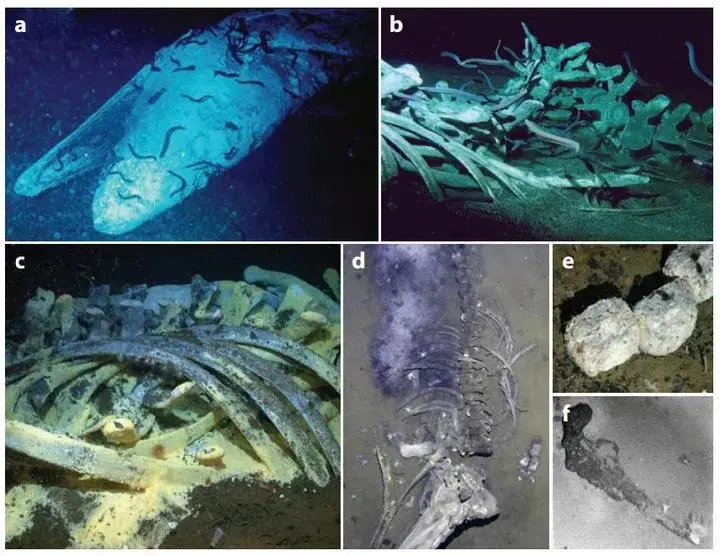
The bones eaten by small creatures like warms

The Ripple Effect: How Whale Falls Benefit the Ocean.
The death of a blue whale is not just the end of an individual’s life but the beginning of a new ecological system. Whale falls play a crucial role in the health of deep-sea ecosystems. They provide a sudden influx of energy and nutrients, which boosts the diversity of life in these isolated habitats. The unique organisms that thrive on Whale Falls are often endemic to these environments and cannot survive elsewhere, making these events critical for biodiversity.
Some scientists believe that whale falls may be responsible for the evolution of certain deep-sea species that have adapted specifically to these nutrient-rich environments. By breaking down the whale’s body, the ocean recycles its nutrients, ensuring that nothing goes to waste and that life can flourish even in the darkest, most remote corners of the sea.
A Blue Whale’s Legacy: Life After Death.
The passing of a blue whale might seem like a solitary, somber event, but its impact is anything but lonely. From its majestic life swimming across the oceans to its final moments, where its body sinks into the deep, a blue whale’s existence touches countless lives. Even after death, it provides for the ocean, nourishing generations of creatures that rely on these rare and essential whale falls.
In this way, the blue whale leaves a lasting legacy a reminder that in the ocean, death is never an end, but the beginning of something new, a cycle of life that stretches on and on in the deep, mysterious waters of our planet.
The wonder how it makes the deep sea by its last journey
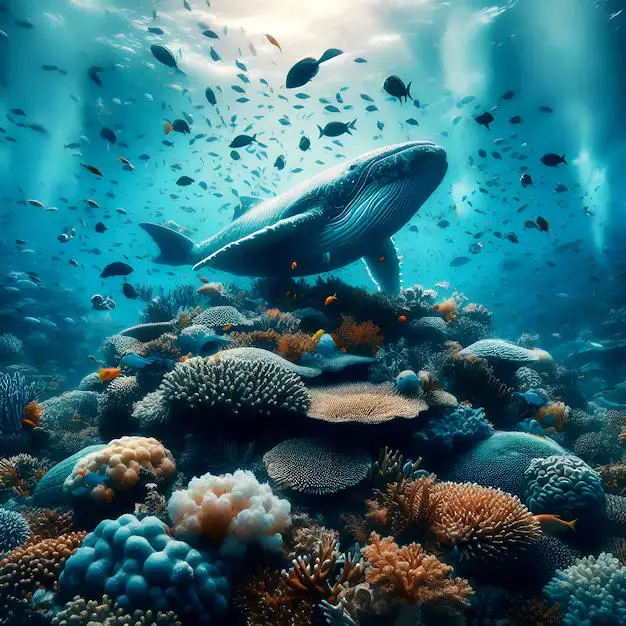
related – 20 Stunning Photos of Whales That Will Leave You in Awe
– The White Whale: Unveiling the Enigma of the Arctic

